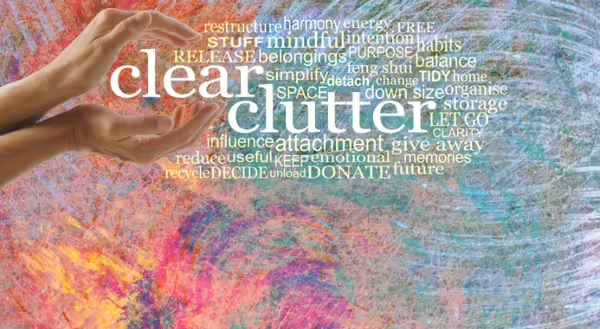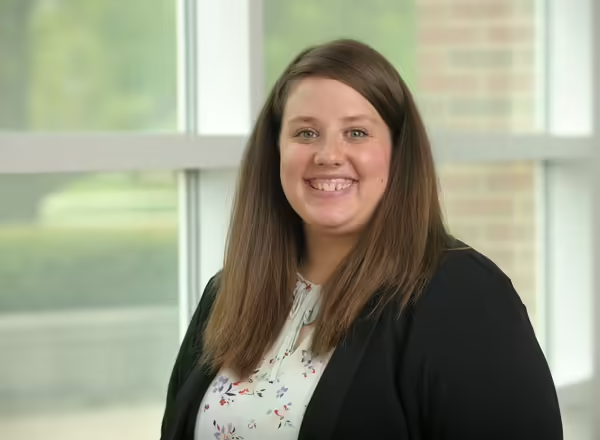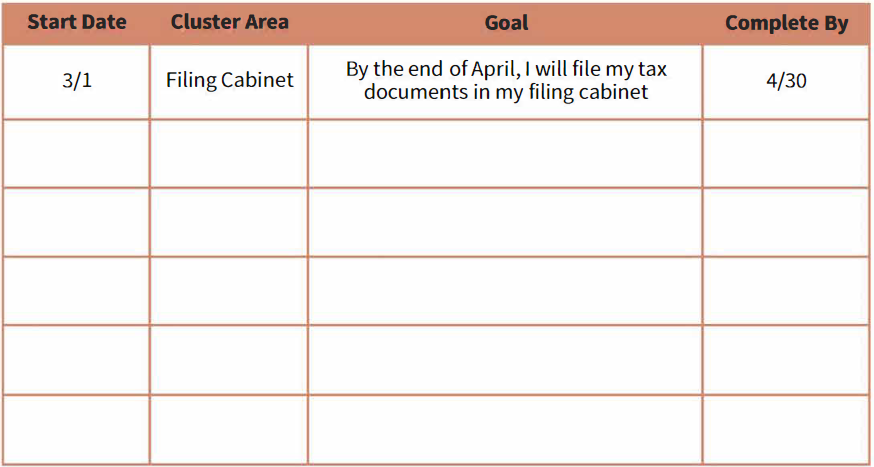
Clutter can be described as a disordered heap or mass of objects. When we think about what qualifies as clutter it can mean different things for different people. For example, magnets on a fridge could qualify as clutter to one person but to someone else, it wouldn’t be. Clutter is very subjective!
As the time change just happened, I took the opportunity to declutter my kitchen table. Does anyone else have a spot in their house that just becomes a catch-all for everything? My family and I have fallen into the bad habit of throwing stuff on the kitchen table that doesn’t have a permanent home. As I started going through the things, papers, coats, and more I went through a process. I asked myself:
- Does it have a permanent home?
- Can I just throw it away or recycle it?
- Can this item be donated if I no longer need it?
Asking myself these questions helped me make decisions about items that we all were avoiding. I’m happy to report that I successfully cleaned off the kitchen table. I put items back in their permanent homes and threw items away that I no longer needed or were broken! It felt so good to see my clean kitchen table. Now I need to stick to it!
How do we get or stay motivated to clear out the clutter?
Staying or getting motivated is something I always struggle with! We all get so busy that sometimes important tasks fall by the wayside. My kitchen table is a prime example. I am now constantly fighting the urge to just sit something down there. But I have to remind myself how nice it looks, and I can just put the item back in its home! It’s always easier to keep something clutter-free than to clean up the clutter.
Some strategies to keep the clutter clear
- Spurt Strategy – Take time during the day or evening to pick up any stray items. This could be anywhere from 5 to 15 minutes. Make it work for you!
- Prompt Put Away – This is when you complete a task or put something away immediately. For example, hang up your coat on the coat hook. Don’t throw it on the kitchen table.
- Castaway Container – This is your donate/resale box. Find a big box or plastic container to put somewhere you can put items in that you want to donate or resale. Once the container is filled, then you can take it to a local donation center. Make sure you are proactive about donating because if not, it can become secondary clutter.
- Good Riddance Routine – Make sure to do declutter maintenance as part of your regular routine! This habit helps you build this in your lifestyle, so the clutter won’t pile up again!
In addition to these strategies, you can set SMART goals to help get yourself focused, and you can start achieving! We know from research that writing your goals down or visualizing them helps us make the goals more achievable. SMART stands for Specific, Measurable, Agreed Upon, Realistic, and Timed. Frame your goal so you can focus on a specific cluster area. Use the chart below to help you think through your own SMART goal!
Here are some resources to help think through where you may want to donate your items:
- Electronics Recycling
- Donate items locally:
- Books can be donated to local libraries, schools, or hospitals
- Blankets and pet supplies can be donated to local animal shelters
- Clothes and household goods can be donated to a local shelter
- In addition, consider the following places to donate: nursing homes, family, neighbors, churches, historical societies, museums, domestic violence shelters, or thrift stores.

Emily Harmon is responsible for family life programming in the counties of Champaign, Ford, Iroquois, Vermilion and other parts of Illinois as needed. Emily’s areas of interest are working with Money Mentor volunteers and providing financial literacy through research-based information. She also enjoys working with older adults to provide healthy living and healthy aging programming. She is passionate about providing resources to empower individuals to make decisions for themselves to improve their overall well-being.
